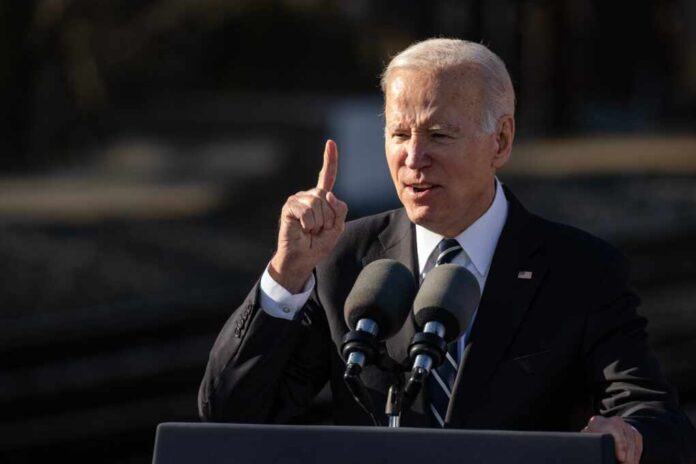
A new Federal Reserve survey unveiled the stark reality that poverty rose in 2022, hitting minority communities the hardest. This increase in poverty came despite the surge in the overall net worth of U.S. households, which grew by 37% from 2019 to 2022, according to the Federal Reserve’s triennial Survey of Consumer Finances (SCF).
The survey revealed that while the typical White family’s income rose by 1.3%, Black and Hispanic families experienced income declines of 1.6% and 1.1% respectively. Moreover, wages for all Americans have not kept pace with inflation. Despite the net worth gains primarily from housing, real average liquid wealth did not grow for minorities.
'Bidenomics' Fueling Economic Pessimism Among Minorities As Incomes Fall, New Fed Data Show https://t.co/FSlFINKqlU
— zerohedge (@zerohedge) October 25, 2023
These figures illustrate a grim picture for minorities under President Joe Biden’s economic policies, collectively known as “Bidenomics.” The administration has often touted the success of its economic strategies, particularly regarding tech hubs and clean-energy jobs. However, the reality for many working Americans, especially minorities, tells a different story.
Joe Biden spoke about the successes of Bidenomics at the Eisenhower Executive Office Building on Oct. 23. “We’re creating good jobs in communities all across the country, including places where, for decades, factories have been shut down, hollowed out when jobs moved overseas to find cheaper employment,” Biden said.
Despite these assertions, data shows that the American people, particularly those residing in swing states like Michigan, North Carolina and Pennsylvania, are not buying into the president’s economic vision. A Morning Consult report found that about three-quarters of swing-state voters believe the U.S. economy is heading in the wrong direction. They reported that their financial situation was better during President Donald Trump’s first White House term.
Great Depression vs Silent Depression 🚨🚨🚨
Comparing costs of homes, cars, rent and income between 1930 and 2023.
These numbers are incredible.
What went wrong?🔊 … sound on pic.twitter.com/TneVTHEUVC
— Wall Street Silver (@WallStreetSilv) September 3, 2023
The Federal Reserve report indicated that while some minority households benefited from stimulus and relief efforts during the pandemic, the expiration of these programs has left families nationwide grappling with rising inflation eroding their purchasing power. The report also highlighted the increasing uncertainty about future income across all ethnicities and races, particularly among Black and Hispanic families.
The disparities in financial well-being across different races and ethnicities are not new. The 2022 Survey of Consumer Finances highlighted that the typical White family had about six times as much wealth as the typical Black family and five times as much as the typical Hispanic family. These disparities have persisted despite some narrowing in wealth ratios since 2019.
The data presented in the Federal Reserve’s surveys and reports paints a grim picture of the current economic situation for minorities in America. The promises of Bidenomics have fallen flat, leaving working Americans of all races and backgrounds struggling to make ends meet while grappling with rising inflation and stagnant wages.
The administration may continue to champion its economic policies. Still, for many Americans, the reality of their situation tells a different story. The upcoming third-quarter GDP growth rate and other economic indicators will be critical in assessing the true state of the economy and the impact of Bidenomics on the American people.




























